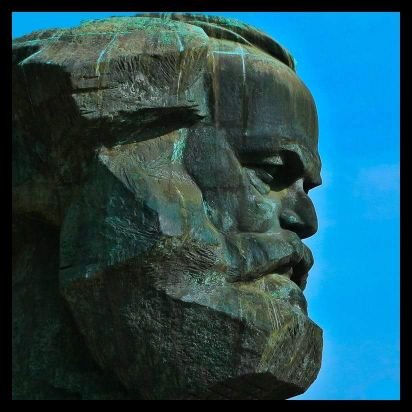«Rethinking Microeconomics: A Proposed Reconstruction»: Anwar Shaikh
 I. Introduction
I. Introduction
Microeconomics is important because individual agents make choices, and choices have personal and social consequences. Incentives do matter, and they do affect individual choices. But it does not follow that individual decision making is characterized by the rules of so-called rational choice and rational expectations or by the reductive incentives they embody. Nor does it follow that aggregates can be analyzed in terms of representative agents. The historical, empirical and analytical evidence against this set of hypotheses is overwhelming. One purpose of this paper is to survey this evidence. But a larger purpose is to demonstrate that the central empirical findings of microeconomics do not require any such foundation, because they can be derived from a wide range of individual decision making modes. Aggregates are shown to be «robustly indifferent» to their microfoundations because shaping structures such as budget constraints and social influences which generally play decisive roles in producing aggregate patterns.
Once it is understood that very different types of microfoundations can give rise to the same market-level or economy-wide patterns, we can partition microeconomics into two types of propositions. Empirically grounded propositions which can be derived from a wide variety of microfoundations: downward sloping demand curves, differential income elasticities for necessary goods, income-driven consumption functions, etc. And propositions which depend on the specific characterization of individual behavior: where the assumed foundation is rational choice, this latter set includes the usual theorems on the efficiency, harmony and general optimality of market processes. The advantage of proceeding in this manner is that it greatly expands the room for the possible characterizations of individual economic behavior while retaining key microeconomic
patterns which play an important role in economic analysis.
None of this implies that micro processes are unimportant. On the contrary, they play a central role in determining individual paths and evaluating the social implications of macro outcomes. In addition, they can become decisive at the aggregate level if and when people choose to act in concert, as in the case of a general work stoppage or a consumer boycott. Agency can be brought back into market analysis. We therefore need to understand how individual agents actually behave, how they actually react to changes in the macro environment, and to what extent the environment is in turn affected. Behavioral and experimental economics, psychology and sociology, can all have their say.
Two conclusions can be derived at this point. First, that a correspondence with the aggregate empirical facts does not privilege any particular vision of micro processes: many roads lead to Rome. And second, when one examines how individuals actually behave, the homo economicus model of behavior is a devastatingly bad one.
It is worth noting that the current division of economic theory into micro and macro is a relatively new one. Classical theory typically began with the theory of price which provided the foundation for the analysis of growth, employment and foreign trade. It was Keynes who first suggested the modern partition between the analysis of the behavior of individual agents and that of economic aggregates (Janssen, 1993, p. 5). In Keynes’ hands, the latter operated by different rules than the former (see section IV of this paper for an analysis of this logic).
Lucas took the very opposite tack: macro must be integrated into micro. The resulting Lucas Critique of Keynesian-type macroeconomics embodied four propositions. Structure is said to emerge from individual decision rules of agent. A change in environment, e.g. in policy, will change individual behavior and therefore change the structure. Hence models based on past patterns cannot be used to predict effects of potential change in environment because the structure will itself change in response to the change in environment. It follows that we need a theory of micro-behavior to predict how macro-outcomes respond to a change in environment (Salehnejad, 2009, pp. 22-25).
Lucas’ central conclusion was that if the integration of macro into micro was properly done, «the term ‘macroeconomic’ will simply disappear from use and the modifier ‘micro’ will become superfluous. We will simply speak … of economic theory» (Lucas, 1987, pp. 107-108), quoted in Grabner 2002, p. 11).
The neoclassical microfoundations project builds on this general foundation by adding five additional distinct claims. Individual agents are assumed to maximize expected utility or profits. Their expectations are essentially correct in equilibrium.
Equilibrium is assumed to obtain in practice. The collective behavior of a particular type of agent can be modeled in terms of a single representative agent with rational behavior and rational expectations. And only macroeconomics derived from microeconomics in this manner can be considered rigorous. It was understood that this particular approach to economics still had to consistent with observed empirical laws of microeconomics such as price and income effects on demand, as well as with observed macroeconomic patterns in output, consumption and investment. But interestingly enough, this approach did not feel itself as bound to observed patterns in individual behavior: the assumption of individual hyperrational behavior remained sacrosanct.
All of these themes will be explored in some detail in this paper. Part II takes up the primary issues in the relation of between micro-processes and macro-patterns: rational choice, complexity theory and “emergent” properties of aggregates (the latter being a modern expression of the age-old notion that a whole can be greater than the sum of its parts). It is argued that there is no reason to be tied to the standard model of hyperrational behavior, which is neither descriptive of actual behavior nor useful as a normative standard. This critique also applies to much of game theory, Becker’s theory of the family, and so-called Analytical Marxism. It is also shown that the aggregate outcomes cannot be characterized by means of a “representative agent” except in except in trivial cases. The real function of the notion of a hyperrational representative agent is that it serves the mission statement of neoclassical economics: it portrays capitalism as efficient and optimal, which makes it perfectly instrumental in that particular sense. The claim that only micro-derived macroeconomics can be rigorous is, so to say, rigorously deconstructed with reference to the well known tension between Quantum Mechanics and General Relativity Theory. Finally, a sharp distinction is made between the notion of equilibrium as a state which is attained and held, and that of equilibrium as a turbulent gravitational process which achieves a rough balance only through offsetting positive and negative errors. Part III presents an analytical framework for robust microeconomics. It is demonstrated that stable aggregate patterns arise from the underlying shaping-structures (budget constraints, income distributions), not from the details of individual behaviors.
By way of illustration, I show that the major empirical patterns of consumer theory (downward sloping demand curves, Engels curves for necessaries and luxuries, aggregate consumption functions) and of production theory (aggregate production functions) can be all be derived from a variety of different microfoundations. Under normal circumstances, macro outcomes are “robustly insensitive” to the details of micro processes. Part IV considers the methodological implications of the preceding results. The Lucas Critique is reconsidered and shown to be wanting in key respects. Five methodological rules for good macroeconomics are then derived, and illustrated with reference to Keynes consumption function and Kalecki’s theory of price. The concluding part of the paper provides a summary and draws out some further implications of this analysis.
Fuente: https://sites.google.com/a/newschool.edu/anwar-shaikh/home


























